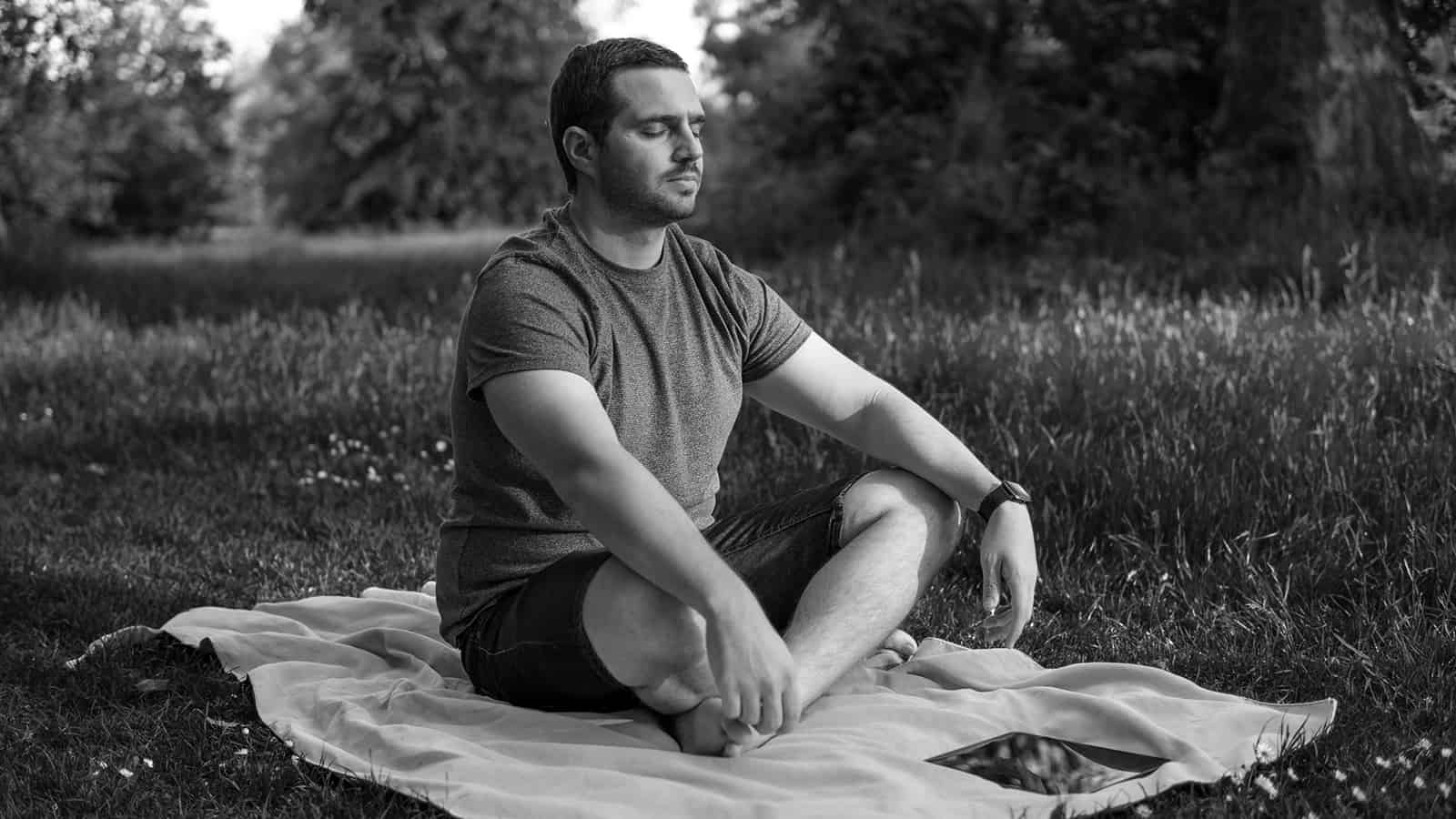If you’re new to meditating, guided meditation can help you get acquainted with the practice. Even if you’ve been meditating for a while, sometimes it’s nice to have someone guide your journey. Most people enjoy meditating in the morning and evening when they are quiet and free of distractions.
You can find many free guided meditations on YouTube or through paid services like YogaGlo. A yoga or meditation teacher can help take your meditations to the next level and get you in the right mindset. If you’d like to quiet your mind and become more peaceful, read on to learn more about guided meditations.
How to Do A Guided Meditation In 5 Steps
You might think that guided meditation only involves listening to someone talk in a soothing voice about how to meditate. However, it’s essential to follow a couple of steps first to set yourself up for the practice. Before you begin, make sure you’re in a comfortable, quiet place with no distractions. Put your phone on silent and turn on your TV and other devices in the room.
Once you’re seated in a meditation position and feel comfortable, it’s time to get started. Aligning your body and mind first will allow you to entirely focus on the guided meditation.
1 – Get grounded.
Before you do anything, it’s crucial to balance your body and mind. Focus on being present and don’t allow your mind to wander to the day ahead. Place your attention on how you’re feeling and the subtle energies coursing through your body. Block anything else out so that you can get the most out of your practice.
You’ll be able to dive deeper into a guided meditation if you steady yourself first. This might mean doing a few stretches, yoga poses, or visualizations, such as imagining yourself firmly rooted to the ground. Once you feel centered, you can move on to the next step.
2 – Set your intention for your practice.
What do you want to receive from your guided meditation? Whether it’s greater peace, confidence, resilience, or joy, make sure to take a few moments to set your intentions. Close your eyes and imagine how you’d like to feel after meditating. You’ll have a more fulfilling meditation session if you can bring that energy into the here and now.
You can take anywhere from a few minutes to around fifteen minutes to do this step. Most importantly, focus intently on what you want from your guided meditation. When you’re ready, you can begin the meditation practice.
3 – Find a guided meditation that resonates with you.
You can find many guided meditations on YouTube that last anywhere from 5 minutes to one hour. Depending on your availability and preference, choose one that works with your schedule. Also, make sure to pick a teacher that you feel comfortable with and can listen to for the allotted time. Some people prefer male teachers while others enjoy females; either way, you should choose someone whose voice you find relaxing and soothing.
You want to pick a teacher that will get you into the right headspace for the guided meditation. If you’re trying to wind down for sleep, this meditation can help you release stress and drift off into dreamland. However, if you’re waking up for the day, you’ll want to choose something a bit more upbeat and refreshing.
Once you find a teacher and video that resonates with you, you’re ready to begin. Keep these tips in mind during your session:
- Sit upright with your back, shoulders, and neck straight. Avoid slumping forward or backward, as this can induce sleepiness.
- Keep your hands comfortably in your lap or on your knees with palms up.
- Close your eyes and focus on your breathing.
- Inhale and exhale slowly, allowing all your thoughts to dissipate.
- Le yourself “be,” and do not try to exert any effort.
- Relax all your muscles until you no longer feel tension or discomfort.
- Remember that you’re the watcher when thoughts come along and not your thoughts.
4 – Sit quietly for a few moments following the meditation.
After your guided meditation ends, don’t just jump up and begin your day or crawl into bed. Sit and reflect for a few moments on your reflection. Did you feel peaceful during the meditation, or did any discomfort or negative feelings come up? Assess how you felt during your meditation, and see how you can apply what you learned to your everyday life. Remember, it’s essential to bring the positive energy you feel during meditation into your life off the mat.
Don’t worry if you’re not feeling the benefits right away, though; it takes time and practice to transform your energy.
5 – Write down a quote on mindfulness that you can look at throughout the day.
After each meditation session, please write a quote on a sticky note or on your phone so you can view it during your daily routine. Being mindful throughout your day will allow you to experience life more fully. Plus, being present will keep stress at bay and increase your concentration, as studies have shown.
You could even journal for a few moments following your guided meditation to gather your thoughts. However, you eventually want to clear your mind completely, as meditation aims to transcend ideas altogether. In the beginning, though, being aware of your thoughts can help you create a foundation for spiritual growth.
Final Thoughts on How to Do a Guided Meditation
Whether you’re a beginner or advanced meditator, guided meditation can enhance your practice. When you find a teacher, you connect with, sit quietly and ground yourself before beginning. This will deepen your practice and help you connect with your higher self more intimately.
Just remember that the most critical part of meditation is letting go. Be in the moment, without judging, expecting, or pushing in any direction. This surrender will help you increase your sensitivity and become aware of the subtle energies that illuminate your physical self. Then, as you practice with regularity, you’ll find it easier to go beyond your thoughts into higher realms. Happy meditating!

















